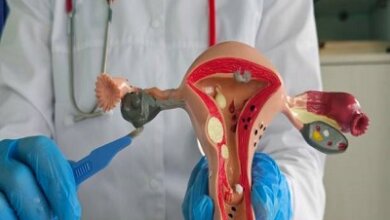Everything You Need to Know About Therapy for Lazy Eye
Lazy eye, medically known as amblyopia, is a condition that affects millions of people worldwide. It typically begins in childhood when one eye develops better vision than the other, leading the brain to favor the stronger eye. Over time, the weaker eye gets “lazy,” and its connection with the brain weakens. While commonly detected in early childhood, lazy eye therapy is not limited to kids—adults too can benefit from effective treatments today, especially with advancements like those offered by Bynocs.
In this blog, we’ll take a deep dive into what lazy eye is, why therapy is important, how different treatment options work, and how innovative platforms like Bynocs are changing the landscape of amblyopia treatment.
What Is Lazy Eye (Amblyopia)?
Lazy eye or amblyopia is a visual development disorder in which one eye fails to achieve normal visual acuity, despite using glasses or contact lenses. This condition often arises due to poor or abnormal visual experience early in life, which alters the brain’s ability to process images from the affected eye. Over time, the brain starts ignoring signals from the lazy eye, leading to further deterioration.
Common causes of lazy eye include:
-
Strabismus (misaligned eyes)
-
Refractive errors like nearsightedness or farsightedness
-
Obstruction in vision due to cataracts or droopy eyelids
If untreated, amblyopia can lead to permanent vision loss in the affected eye.
Why Early Detection Matters
The earlier lazy eye is detected, the better the chances of successful treatment. The human visual system continues to develop until the age of 7–9, making early childhood the most effective window for lazy eye therapy. However, thanks to modern treatment methods, even adults can achieve significant improvements.
Signs and Symptoms of Lazy Eye
Lazy eye can be difficult to spot, especially in children. Here are some signs that may indicate amblyopia:
-
One eye wandering inward or outward
-
Poor depth perception
-
Head tilting
-
Frequent eye squinting or shutting one eye
-
Difficulty reading or performing tasks that require visual attention
If you notice these signs, it’s crucial to consult an ophthalmologist or optometrist for an accurate diagnosis.
What Is Lazy Eye Therapy?
Lazy eye therapy refers to a range of treatments designed to stimulate the weaker eye and retrain the brain to use both eyes together. Traditionally, this involved methods like eye patches or atropine drops. Today, therapy has evolved to include digital solutions, vision training, and virtual reality.
1. Patching (Occlusion Therapy)
Patching involves covering the stronger eye to force the brain to rely on the lazy eye. This is one of the oldest and most widely used therapies for amblyopia. Depending on the severity, the patch may need to be worn for several hours a day over weeks or months.
Pros:
-
Simple and affordable
-
Clinically proven
Cons:
-
Can cause discomfort
-
Social stigma, especially among children
-
Compliance issues
2. Atropine Eye Drops
Atropine drops are placed in the stronger eye to temporarily blur vision, encouraging the use of the weaker eye. This method is often used as an alternative to patching.
Pros:
-
Less noticeable than a patch
-
Fewer compliance issues
Cons:
-
Side effects like light sensitivity
-
May not be suitable for all children
3. Vision Therapy
Vision therapy is a structured program of visual activities that improve eye coordination, focusing abilities, and visual processing. It often includes:
-
Eye-tracking exercises
-
Computer-based games
-
Activities to improve depth perception and focus
This method is ideal for both children and adults.
4. Digital Lazy Eye Therapy with Bynocs
Bynocs is a revolutionary vision therapy platform that uses cloud-based, gamified software to treat amblyopia. Instead of relying solely on patching, Bynocs offers a binocular approach—meaning both eyes are trained to work together, not in isolation.
How Bynocs Works:
-
Patients play interactive video games tailored to stimulate the lazy eye
-
The stronger eye’s vision is intentionally blurred in-game to encourage use of the weaker eye
-
The system adapts difficulty based on patient performance
-
Treatment is typically done under supervision via a connected optometrist or ophthalmologist
Benefits of Bynocs:
-
Non-invasive and enjoyable: Games are engaging, which improves compliance.
-
For all ages: Suitable for both children and adults.
-
Remote accessibility: Can be done from home under professional supervision.
-
Clinically backed: Supported by multiple studies showing improved visual acuity and binocular vision.
With platforms like Bynocs, lazy eye therapy is no longer just about wearing a patch—it’s about retraining the brain in a more holistic, enjoyable way.
Lazy Eye Therapy for Adults – Is It Too Late?
Many people believe that once you pass childhood, lazy eye cannot be treated. This is a myth. Though it’s true that earlier treatment yields better results, adult brains still retain a degree of neuroplasticity—the ability to form new neural connections.
Bynocs and other vision therapy programs have shown significant improvements in adults with amblyopia, especially when combined with:
-
Custom-tailored vision training
-
Eye-tracking exercises
-
Cognitive and perceptual tasks
So if you’re an adult with a lazy eye, don’t lose hope—effective therapy options are available.
What to Expect During Lazy Eye Therapy
Your treatment plan will depend on the underlying cause, age, and severity of the amblyopia. A typical lazy eye therapy program may include:
-
Comprehensive Eye Exam – Identifying root cause and measuring visual acuity
-
Prescription Glasses – To correct refractive errors
-
Therapeutic Regimen – May include patching, vision therapy, or digital programs like Bynocs
-
Progress Monitoring – Regular follow-ups with eye care professionals
Duration of therapy can range from a few weeks to several months, and ongoing maintenance may be required to preserve results.
Tips for Supporting Lazy Eye Therapy at Home
Success in lazy eye therapy isn’t just about the treatment—it’s about consistency and support. Here’s how you can enhance the process:
-
Encourage your child: Make therapy a part of a routine, not a chore.
-
Use rewards: Positive reinforcement helps with compliance.
-
Create a distraction-free environment: Especially during digital therapy sessions.
-
Follow doctor’s instructions strictly: Adherence is key to effectiveness.
Final Thoughts
Lazy eye may be a common condition, but with today’s technology, it no longer has to limit one’s vision or confidence. Whether you’re a parent seeking help for your child or an adult looking to regain visual clarity, lazy eye therapy offers a range of effective solutions. Traditional methods like patching are still relevant, but newer options like Bynocs are paving the way for more engaging and successful treatments.
By combining medical expertise, innovative software, and patient commitment, lazy eye can be treated at almost any age. So don’t wait—consult your eye care specialist and explore therapy options like Bynocs to restore balanced vision and improve your quality of life.
Ready to Begin Your Lazy Eye Therapy?
Talk to your eye care provider about integrating digital therapies like Bynocs into your treatment plan. With personalized programs and supervised sessions, you or your child can begin the journey toward stronger, more synchronized vision today.
Read More –




